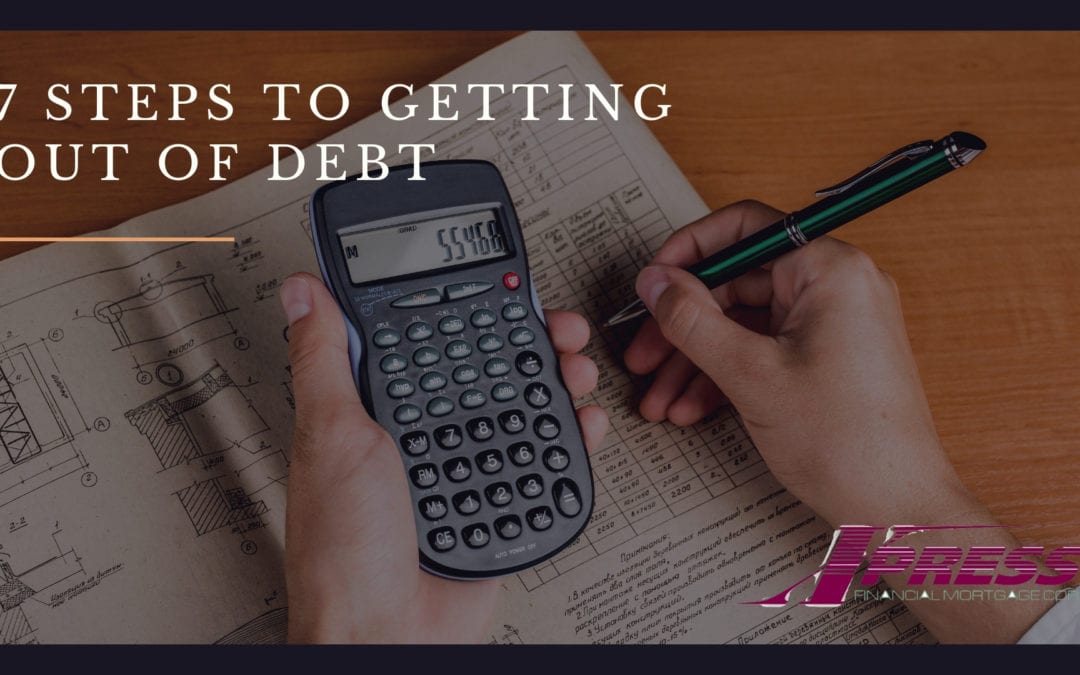Getting out of debt can seem like a daunting task, especially depending on how much debt you have. But, it’s not impossible. If you take it step-by-step, a little at a time, and don’t put on any more debt, you can get out quicker than you think. Being in debt can feel terrible and keep you from reaching your goals. So how do you start getting out of debt?
#1. Start by changing your bad spending habits.
Are you spending more than your income every month? It may be time to get on a budget. Figure out how much you need each month for mandatory expenses such as mortgage or rent, utilities, food, clothing, and any other housing or mandatory expenses. Put a freeze on all of your credit cards and make a vow that you won’t spend more than your income each month. Identify any bad spending habits and analyze your spending to make changes where appropriate.
#2. Understand how much debt you have.
You might be oblivious to how much debt you really have but it’s time to face the reality. Make a list of all of your debts, the amount you owe, the interest rate, and the minimum payment. Use your recent billing statements and get your credit report to get a complete list of everyone you owe and the amount you owe.
#3. Decide how much you can afford to pay.
If you’re only paying the minimum every month it will take you years, possibly decades to pay off your debt. You’ll have to pay off your debt much faster so you’ll need to pay more than the minimum. Start small and pay off the smallest debts first. It may not be the highest interest rate, but if you can wipe that one out and then take that payment and roll it into the next highest that amount, you’ll create a snowball effect.
#4. Make a plan.
It doesn’t have to be complicated but by paying off the smallest debts first and then taking that payment once it’s paid off and putting it towards the next smallest debt, you will add more than the minimum payment to both, paying off debt quicker. Once you’ve prioritized your debts, decide how much you’re going to pay every month. Use a debt repayment calculator to find out how long it will take to pay off your debt.
#5. Start making payments.
With a plan and a monthly payment amount, all you have to do is send your payments faithfully every month. This could take a few months to several years depending on the amount of debt you have. But you can track your progress and create milestones to help you stay motivated.
#6. Don’t create more debt.
Make sure that you’re not adding more debt each month. You can put a freeze on your credit cards or simply cut them up and not use them at all.
#7. Don’t worry about a setback.
As with any plan, setbacks may happen but don’t let that stop you from continuing on your path to freedom. A financial emergency could require you to cut back on increased payments but when you can, just pick up where you left off and get back on your plan as quickly as possible.
Need help making a plan for debt freedom? Give us a call today. We’d love to help you with refinancing or consolidating loans or helping you with the HELOC or second mortgage.

